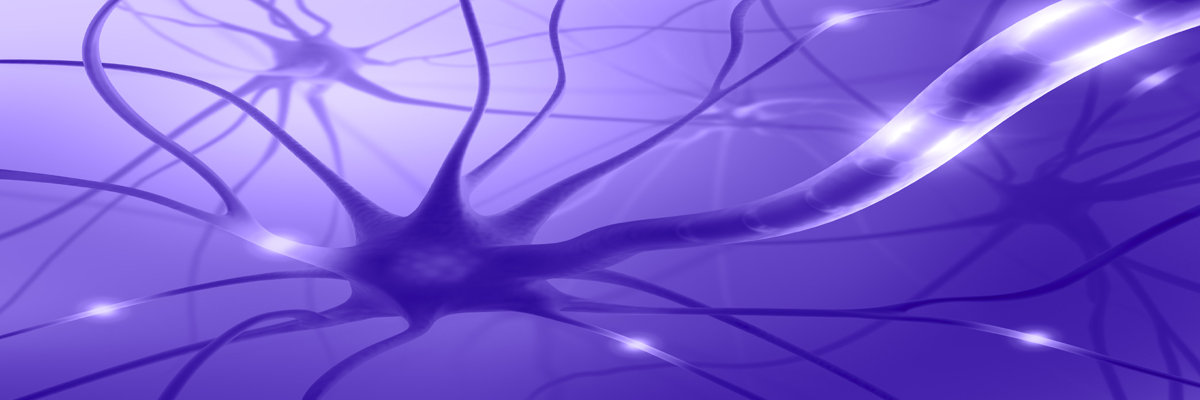| 1. | AN IN VITRO STUDY: INDIAN STRAIN OF JAPANESE ENCEPHALITIS VIRUS INFECTION IN PORCINE STABLE KIDNEY CELL USING 1H NMR SPECTROSCOPY |
| Sarika Tiwari1, 2, Rishi Kumar Singh1,3, Santosh Kumar Bharti2, Raja Roy2, Raj K Singh3, T.N. Dhole1 |
|
| Article Type:Research Article/
Abstract
|
Full Text 
|
No of Download=2409 |
Pages (50-58) |
|
|
ABSTRACT
Japanese encephalitis (JE) is a common mosquito borne flaviviral encephalitis which is one of the leading forms of viral encephalitis worldwide with prevalence mostly in the eastern and southern Asia. The effects of Japanese encephalitis virus infection in cell line derived from porcine stable kidney cell (PK) were studied using optical microscopy and 1H NMR spectroscopy. The controls of PK cells were consumed glucose and produced lactate, acetate and formate as extracellular metabolites whereas the infected with JE virus cells consumed significantly higher glucose and produced lactate, acetate and formate as extracellular metabolites. At the onset of infection, extracellular metabolites lactate was converted to acetate, whereas its gradual increase was observed till 72 hours in uninfected cells. In the intracellular metabolites of infected cells showed significantly high concentration of valine, leucine, isoleucine, histidine, phenylalanine and tyrosine respectively in comparison to uninfected cells. Progressive breakdown and consumption of all cellular components were observed as the infections were increases. The Cell Lipid extraction shows that Cellular metabolites except lipid components gradually decreased and disappeared during 12–72 hours of viral infection. The study is useful for monitoring the cellular metabolic changes upon virus infection. This indicates the possible application of cell-virus interaction studies using cellular metabonomics.
Keywords: 1H NMR, Optical microscopy, Japanese Encephalitis Virus, PK cells, Cell–virus interaction.
|
| 2. | ASSESSMENT OF THE ANTI-ARTHRITIC EFFECTS OF BRASSICA NIGRA SEED EXTRACTS IN EXPERIMENTAL MODELS IN ALBINO RATS |
| M. Vinyas1*, Shiv Kumar1, Bheemachari1, K. Sivaiah1, G. Avinash Kumar Reddy2 |
|
| Article Type:Review Article/
Abstract
|
Full Text 
|
No of Download=3002 |
Pages (59-61) |
|
|
ABSTRACT
The aim of this study was to assess the anti-arthritic activity of Brassica Nigra. Arthritis is induced in the albino rats by inducing the freunds complete adjuvant. The seeds of freunds adjuvant were coarsely powdered and extracted with ethanol (95%) and water using soxhlet. The effect of these plant extracts on arthritic rats were assessed by the various blood parameters and also taking the changes in paw volume. The BN suppressed the anti –arthritic changes induced in rats and results were statically significant.
Keywords: Brassica Nigra, Anti-arthritic activity, Seed extract.
|
| 3. | AN OVERVIEW OF IMMUNOLOGY |
| G. Balammal and P. Jayachandra Reddy |
|
| Article Type:Review Article/
Abstract
|
Full Text 
|
No of Download=1687 |
Pages (62-70) |
|
|
ABSTRACT
Immunology is a branch of biomedical science that covers the study of all aspects of the immune system in all
organisms. This review deals with the physiological functioning of the immune system in states of both health and diseases;malfunctions of the immune system in immunological disorders (autoimmune diseases, hypersensitivities, immune deficiency,transplant rejection); the physical, chemical and physiological characteristics of the components of the immune system invitro, in situ, and in vivo. Immunology has applications in several disciplines of science.
Keywords: Immunology, Application, Types, ELISA.
|
| 4. | EVALUATION OF INVIVO ANTIOXIDANT ACTIVITY OF VANDA TESSELLATA ROXB. IN ALBINO WISTAR RATS |
| G. Sudhakara Rao1*, G. Kiran2, G. Prasanna Ramakrishna2, Pavani Marella2,
Y. Bounty Rebekah Aviv2, Chedella Swetha2 |
|
| Article Type:Review Article/
Abstract
|
Full Text 
|
No of Download=2034 |
Pages (71-74) |
|
|
ABSTRACT
Vanda tessellata Roxb. (Family: Orchidaceae) plants have been used in the indigenous medicine such as Ayurveda and local traditional medical practices. To investigate the antioxidant activity of the petroleum ether extract of Vanda tessellata Roxb. (PVT) was investigated in rats with carbon tetrachloride (CCl4) induced erythrocyte damage. Simultaneous administration of the PVT (200 and 400 mg/kg body weight/day i.p) with carbon tetrachloride (1ml/kg of body weight) to rats for alternate days of two weeks protected the loss of functional integrity and membrane lipid alteration in red blood cells induced by oxidative stress. PVT inhibited the accumulation of lipid peroxidation products in the plasma as well as maintained the activities of antioxidant enzymes such as superoxide dismutase (SOD) and catalase. The PVT further had the ability to decrease the membrane fluidity induced by carbon tetrachloride. It can therefore be suggested that the PVT possess an erythrocyte protective activity against drug induced oxidative stress. These findings also provide a rationale for further studies on isolation of active principles and its pharmacological evaluation.
Keywords: Antioxidant enzymes, Carbon tetrachloride, Lipid peroxidation. Vanda tessellata, PVT, Erythrocyte Damage.
|
| 5. | TOXICOLOGICAL STUDIES ON MALACHRA CAPITATA (L.) EXTRACT IN EXPERIMENTAL ANIMALS |
| V. Rajalakshimi*, P.V. Sireesha Rani, CH. Sireesha, E. Rajini, N. Naresh |
|
| Article Type:Research Article/
Abstract
|
Full Text 
|
No of Download=1799 |
Pages (75-79) |
|
|
ABSTRACT
The roots of the Malachra capitata (L.) (Family: Malvaceae) is traditional remedies for the many disease condition such as pain, hepatic cirrhosis, inflammation, diarrhea, convulsion, dementia, pyrexia, ulcer, healing of wounds. The present investigation was carried out to evaluate the safety of aqueous extract of Malachra capitata (L.) (AMC) roots by determining its potential toxicity after acute and chronic administration in rats. Study on acute toxicity of extract found to be safe at the doses 2000mg/kg body weight orally as per OECD guidelines No.423. General behavior adverse effects and mortality were determined for up to 14 days. In the chronic toxicity study, the AMC was administered orally at doses of 100, 200 and 400 mg/kg once in a week for 6 weeks to rats. Biochemical and hematological parameters were determined after 6 weeks. In the acute study in rats, there was no toxicity/ death was observed at the dose of 2000mg/kg b.w. The onset of toxicity and signs of toxicity also not there. In the chronic toxicity study, no significant treatment-related changes in the levels of haematological, hepatic and renal parameters such as SGOT, SGPT, cholesterol, creatinine, urea, uric acid, protein and glucose, and serum ALP activities were observed at the termination of the study. It suggests that the aqueous extract of Malachra capitata (L.) does not appear to have significant toxicity. In view of the dose of Malachra capitata (L.) consumed in traditional medicine, there is a wide margin of safety for the therapeutic use of the aqueous extract of Malachra capitata (L.) roots.
Key words: Malachra capitata (L.), Traditional Medicine, Acute and Chronic Toxicity, Heamatological Parameters, Biochemical Parameters.
|
| 6. | INVITRO ANTI- OXIDANTS ACTIVITY OF ROOTS OF MALACHRA CAPITATA L. |
| I. Govardhan Kumar*, B. Kumar, NS. Midhuna Sagari |
|
| Article Type:Research Article/
Abstract
|
Full Text 
|
No of Download=1843 |
Pages (80-83) |
|
|
ABSTRACT
The root of the Malachra capitata (L.) is traditional remedies for the many disease condition such as pain, hepatic cirrhosis, inflammation, diarrhea, convulsion, dementia, pyrexia, ulcer, healing of wounds. It is very population perennial herb that is distributed in world wide. The leaves of wood sorrel are quite edible with a tangy taste. In this present study the aqueous extract of roots Malachra capitata L. were investigated by using DPPH scavenging test and reducing power method. The preliminary phytochemical screening was performed and the total phenolic content had been estimated. The AMC exhibited a significant dose dependent inhibition of DPPH activity. The IC50 values of the AMC and reference standard ascorbic acid have significant anti-oxidant activity and the similar activity was shown in the other method also.
Keywords: Malachra capitata L., Antioxidant, DPPH radical scavenging.
|
| 7. | ANTI-EPILEPTIC ACTIVITY OF VANDA TESSELLATA ROXB. ON MAXIMAL ELECTROSHOCK INDUCED SEIZURE IN ALBINO WISTAR RATS |
| V. Rajalakshimi*, SK. Mamola, S. Prapurna, P. Rafikhan, K. Madhusekhar |
|
| Article Type:Research Article/
Abstract
|
Full Text 
|
No of Download=2285 |
Pages (84-87) |
|
|
ABSTRACT
Vanda tessellata Roxb. (Family: Orchidaceae) plants have been used in the indigenous medicine such as Ayurveda and local traditional medical practices. The petroleum ether extract of Vanda tessellata Roxb. (PVT) was subjected to acute toxicity and then screened for anticonvulsant activity on Maximal Electroshock (MES) induced seizures model in albino wistar rats. Acute toxicity of extract was non toxic up to the recommended dose 2000 mg/kg. p.o. Animals were treated with PVT at doses of 250 and 500 mg/kg body weight. Study results showed, the mean duration of extensor phase of treated groups reduced significant level than compared to control group. PVT showed anti-epileptic activity against MES animal models. However, further studies still needed to be carried on exposure of the extract to humans.
Keywords: Anti-epileptic activity, Vanda tessellata Roxb., Maximal Electroshock (MES).
|


